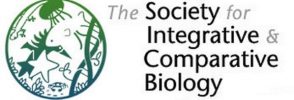Contents
- DIZ Officers
- DIZ Student Awards
- Message from Chair
- Origin of the SICB Libbie H. Hyman Fund
- Message from the Program Officer
- Message from the Secretary
- Message from the Student and Postdoctoral Affairs Committee Representative
- Message from the Libbie Hyman Scholarship Selection Committee
- DIZ 2023 Elections
- Candidates for DIZ Chair
DIZ Officers
Jonathan Allen, Chair, Chair.DIZ@sicb.org; Adam Reitzel, Program Officer, DPO.DIZ@sicb.org; Kelly Morgan, Secretary, secretary.diz@sicb.org; Will Ballantine, Student-Postdoc Representative; Abigail Cahill, Libbie Hyman Memorial Scholarship Committee Chair
DIZ Student Awards
Congratulations to the student award winners from SICB 2023 in Austin!
Mary Rice Best Student Presentation Award
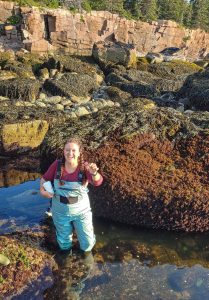
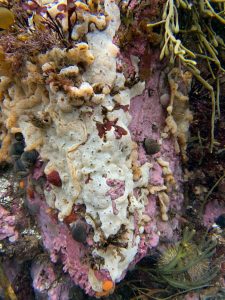
The winner of the Mary Rice Best Student Presentation is Emily Pierce for “Squishy versus crunchy: physical characteristics affect invasive species detection using environment.”
Emily summarized her research: “All organisms shed DNA into their environment as they respire, perspire, and reproduce. This environmental DNA (eDNA) can be used to detect species in low abundance, such as invasive or rare species. My research with advisor Dr. Markus Frederich has shown that not all marine invertebrate species shed eDNA equally. Organisms that are “squishy,” or have more exposed soft tissue shed more eDNA than organisms that are “crunchy” such as crabs that have a hard exoskeleton. This means that our ability to detect the severity of an invasion using eDNA samples alone may be limited for some species depending on their body plan.”
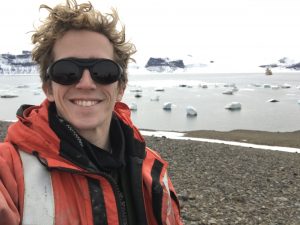
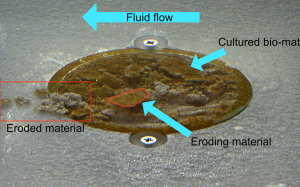
The runner-up for the Mary Rice Best Student Presentation is Will Ballentine for “Biostabilization of marine sands by microalgae and meiofauna.”
Will summarized his research: “Benthic marine diatoms create gooey secretions called extracellular polymeric substances (EPS) that bind the surface of marine sands into a cohesive bio-mat, confounding models of sediment transport. We investigated how this stabilization affects sediment erosion and whether those effects are modulated by bio-mat age and the presence of micro-grazers (meiofauna). We found that bio-mats increase the fluid shear required to erode sediments and that bio-mats fail patchily over a range of shear stresses, rather than at some critical value as was previously thought. Age significantly increased the stabilization potential of bio-mats, and the presence of micro-grazers potentially increased stabilization, but only over longer time periods.”
Alan Kohn Best Student Poster Competition
The winner of the Alan Kohn Best Student Poster is Raquel Mejia-Trujillo for “Genomic signatures of mitonuclear sex determination in a bivalve with doubly uniparental inheritance.”
Raquel summarized her research: “Freshwater mussels have two divergent, sex-specific mitochondrial lineages that are inherited doubly uniparentally (Figure 1, below). Unlike most animals, females pass on female-type mitochondria to all offspring, while males only pass on male-type mitochondria to their sons. Although male-type mitochondria are associated with maleness, it is unclear whether they play a role in the sexual development of males. My research, with my advisor Dr. Chase Smith, supports that male-type mitochondria are masculinizing factors during sexual development. We hypothesize that masculinization involves interactions between mitochondrial short non-coding RNAs and nuclear sexual development pathways. Our results provide further evidence of a non-respiratory mitochondrial function and an unorthodox sex determining system in freshwater mussels.”
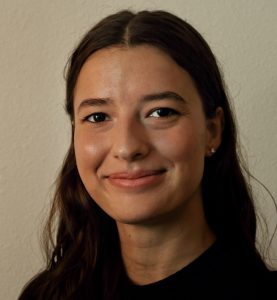
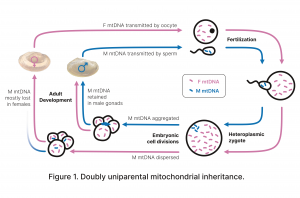
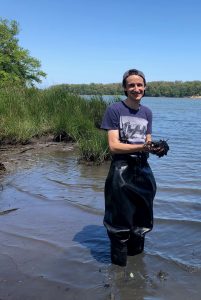
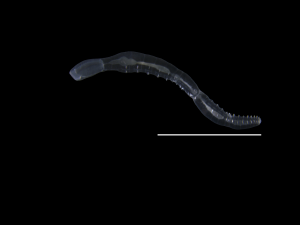
The runner-up for the Alan Kohn Best Student Poster is Joseph Mack for “Regenerative and non-regenerative annelids maintain their resting metabolic rate after amputation.”
Joseph summarized his research: “The transition into carnivory is a profound dietary shift that has evolved numerous times in animals, but underlying mechanisms for this transition are poorly understood. Within the phylum Annelida, ancient origins of carnivory have led to highly successful groups like leeches, while recent acquisitions of carnivory have also occurred. Chaetogaster, a genus of small freshwater oligochaetes, is one widespread example with at least two recent origins of carnivory. Using DNA metabarcoding of Chaetogaster gut contents, we were able to demonstrate that carnivory evolved two different ways in Chaetogaster.”
Message from Chair
Jon Allen, Chair.DIZ@sicb.org
Dear DIZ,
Greetings! What a joy to be writing this newsletter from my porch on a glorious spring day in Virginia. The arthropods in my yard are busily working on pollinating our peach trees and visiting our red buds that are now bursting out into brilliant color after a very mild (some might say scarily mild) winter here in the tidewater area.
I was thrilled to be able to see so many of you in person at the annual meeting in Austin, TX in January. We had a great turnout and I think had a shot at surpassing our number of attendees from our last Austin meeting, which occurred in 2020 just before the pandemic began to be ‘a thing’. It was so wonderful to be in person again and the meeting itself was, as always packed with excellent science and scientists.
One of the bittersweet parts of the meeting is that it marked the official end of Karen Chan’s term as DIZ Program Officer. For those who were at the DIZ business meeting, you heard firsthand from myself, our executive committee and just about everyone who spoke, just how essential Karen has been to the running of DIZ and many other areas of the society in general. I can’t overstate how incredibly helpful Karen has been to me, personally, in helping make sure that the meeting activities come together smoothly and also making sure my kids (who attended the meeting with me) had some homemade treats to occupy them while dad was working. Thank you Karen!! The good news is that we have a very capable new PO in the person of Adam Reitzel who officially took over at the close of the 2023 meeting and who will be working hard to fill Karen’s shoes and ensure a smooth transition.
Speaking of transitions, it is election season! We have two excellent nominees to replace yours truly as Division Chair. I know that either choice will be a marked improvement over the current Chair. I will serve through the end of the 2024 meeting, which means we need to vote this spring on a new Chair to take over next January. The two nominees for this year are Dr. Alyssa Stark at Villanova University and Dr. Bob Podolsky at College of Charleston. Both Bob and Alyssa are familiar faces at SICB, but you can learn more about them and their backgrounds at the end of this newsletter. We are always looking for new folks to get involved in DIZ leadership. If you would like to be considered in the future for a nomination, please let me know!
One of the major activities of the meeting in Austin was the Libbie Hyman Auction. This year the auction was organized by Dr. Bruno Pernet and Dr. Anna Klompen. We owe a special debt of gratitude to Anna who incredibly coordinated all of the on-site activities with respect to the auction and managed to get all of the items there in one piece and then shipped off to the winners at the end. It was a huge amount of work and I am incredibly grateful to her for this major investment of time. We also owe a huge thanks to Dr. Billie Swalla for being willing to serve as our auctioneer (and Ken Halanych for his help in the Vanna White role). As always, Billie was able to perform at the top of her game in this role and we are so lucky to have her contribute to the enthusiasm of the event. With all of this help, more than $3,000 was raised to support student scholarships.
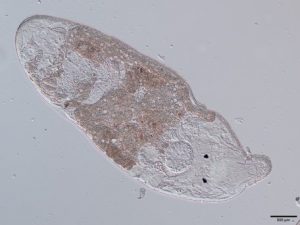
Lastly, as we reported at the DIZ Members Meeting (see the minutes from that meeting on our divisional website), we received two major gift bequests to the Hyman Memorial fund just before the meeting convened. The first came from the estate of Dr. Margaret Simpson and the second, from the estate of Dr. Mary Rice. When added together, there is now more than $400,000 in the Hyman fund. This is more than double the divisional goal of $200,000 that was set just a few years ago! This is obviously an incredible windfall for the Society and for DIZ. Over the years, some of the ‘institutional memory’ of the origins of the Hyman fund was lost and it is important to retain this both to keep the spirit of the fund alive, but also to ensure we are good stewards of the funds we have to spend. After a series of emails, zoom calls and conversations with Brett Burke and Trish Morse, we now have a better understanding of the history of the fund. Below is a brief history that Trish was kind enough to write up for us to include in the newsletter. In brief, we have few legal restrictions on how we might spend the funds beyond honoring the memory of Libbie Hyman. During the business meeting we received some excellent suggestions on ways the new windfall may be spent, with a special emphasis on supporting the participation of underrepresented groups in studying invertebrates. We will continue to fund the existing Hyman Memorial Scholarships of course (see Abby Cahill’s report for details) but now we can expand our support of that and also consider new ways that funds might be used to honor her memory. The DIZ leadership will work to generate some more concrete suggestions for how the funds should be spent in the near term and we will share those and ask for feedback on them during the course of the spring and summer. What a wonderful position to be in and it is so special to have the memories of Margaret Simpson and Mary Rice be joined with Libbie Hyman!
Origin of the SICB Libbie H. Hyman Fund
Trish Morse
In 1970, the Libbie H. Hyman Memorial Symposium occurred in Chicago, Illinois. Arranged by M. Patricia Morse, Nathan W. Riser and Horace W. Stunkard, the Symposium was sponsored by the Division of Invertebrate Zoology of the American Society of Zoologists (ASZ). The symposium was co-sponsored by the Society of Systematic Zoology and the American Microscopical Society. ASZ (now named the Society for Integrative and Comparative Biology, SICB) met with American Association for the Advancement of Science (AAAS) in Chicago in 1970.
With the aid of a National Science Foundation Grant (GB-22862), participants were brought from eleven countries and honored Dr. Libbie Hyman with updating work on the biology of the Turbellaria. Much of the information presented at the meeting was new, especially with numerous interstitial species and visualization of systems with electron microscopy. McGraw-Hill Publishing Co. publishers of the series Volume 1–6, written by Dr. Hyman, agreed to publish this memorial volume (Editors N.W. Riser and M. P. Morse: Biology of the Turbellaria, McGraw-Hill 1974, 1-530. Dr. Horace Stunkard from the American Museum of Natural History, wrote an in memoriam introduction and a Bibliography of Libbie Hyman’s work.
Morse and Riser proposed that the proceeds from this book form a fund dispersed by the Invertebrate Zoology section of ASZ.
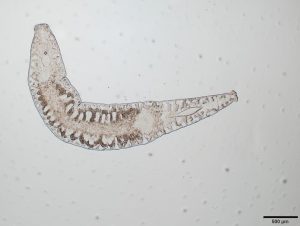
Another very important and major activity was a symposium organized by Judith E. Winston presented at the 1991 Annual Meeting of the American Society of Zoologists (ASZ) in Atlanta, Georgia. In 1999 Winston edited the papers from the symposium and they were published by the American Museum of Natural History (American Museum Novitates #3277, 1999, 66pp). This volume has wonderful stories including pictures and direct correspondence of Dr. Hyman by Dr. Judith Winston and several other authors associated with the American Museum.
Message from the Program Officer
Adam Reitzel, DPO.DIZ@sicb.org
While I was unable to attend this year’s meeting due to health reasons, by all accounts it was a wonderful meeting with great invertebrate science! I would like to highlight the amazing student contestants in this year’s best student presentations and thank the judges for volunteering their time and expertise. You can learn more about the winners’ work in this newsletter.
We have an excellent lineup of exciting symposia planned for SICB 2024 in Seattle. We are supporting two society-wide symposia. These are “Convergent Evolution Across Levels of Biological Organization, Organisms, and Time” and “Computational and Physical Models in Research and Teaching to Explore Form-Function Relationships.” We are also supporting four additional symposiums on “Chordate Origins, Evolution and Development,” “Modeling Organismal Responses to Changing Environment,” “Evolution, Physiology, and Biomechanics of Insect Flight,” and “Immunity in the ‘omics Age: What can ‘omics approaches tell us about immunity in natural systems?”
If you are interested in organizing a symposium for the 2025 meeting in Atlanta, the proposals are usually due in late summer. As a former symposium organizer, it is a great experience and I highly encourage it! I am happy to talk to you and guide you through this process. It is a wonderful opportunity to meet new colleagues, synergize a field of study, and to support your research community. I look forward to seeing you in Seattle in January, Until then, continue doing what you do and taking care of yourself.
Message from the Secretary
Kelly Dorgan, secretary.diz@sicb.org
Dear members of DIZ,
I hope everyone had a great meeting in Austin! For those of you who missed our excellent student presentations, I hope you enjoy the highlights in this newsletter.
This year we will hold elections for our next DIZ Chair, who will take over from Jon Allen. We have two excellent candidates for you to choose from: Dr. Robert Podolsky from The College of Charleston and Dr. Alyssa Stark from Villanova University. You can find more information about these candidates at the end of this newsletter. We will also be voting on minor changes to our divisional bylaws, posted here.
Please contact me if you have any news to share, and I’ll be happy to pass it along to our members. I’m also always looking for good invert photos to include in the newsletter, so if you have any good photos to share, send them my way!
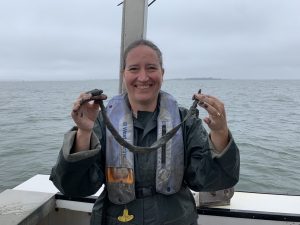
I’ll share a happy invertebrate moment that I had recently – I finally got back to diving after several years and after a few very low-vis dives collecting mud cores in the Chesapeake Bay, I was thrilled to get several feet of visibility, enough to see big parchment tubes (made by Chaetopterus) so densely packed you couldn’t tell which tubes connected. Chaetopterus are suspension feeders that pump water through their U-shaped tubes and produce mucus nets to filter particles. They also, as I learned, send lots of fecal pellets shooting up out of their tubes high enough to be swept away by the currents – a spectacular poop volcano!
Kelly Dorgan
Message from the Student and Postdoctoral Affairs Committee Representative
Will Ballentine
Hello! My name is Will Ballentine, your new DIZ Student and Postdoctoral Affairs Committee representative taking over for Rebecca Varney. I am a PhD candidate at the University of South Alabama / Dauphin Island Sea Lab studying the biophysical interactions between meiofauna and their sedimentary home. I have been a member of DIZ since 2019 and love invertebrates of all sizes, but the diversity of form and function present in even a small sample of meiofauna captured my interest as an undergraduate and has held it ever since.
Meiofauna live in the interstitial spaces of marine sediments, making them difficult to observe in nature. Sadly, they are frequently overlooked by the casual naturalist and invertebrate zoologist alike. In my dissertation, I have worked to develop new tools and methodologies that make observing the interstitial lives of meiofauna easier, both to further my own research and to help meiofauna with their PR problem. Anyone who watches these amazing animals swim, grip, slide and squeeze through the interstitial environment becomes fascinated by their tiny behaviors, and I hope to help bring these amazing animals into the limelight.
As your new SPDAC representative I look forward to working with DIZ leadership to promote our division and the amazing organisms we study. I hope to grow student involvement within DIZ and continue to foster the welcoming, invert-loving environment that brought me to the Division of Invertebrate Zoology 4 years ago.
Wormly,
Will Ballentine
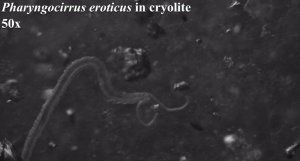
Message from the Libbie Hyman Scholarship Selection Committee
Abigail Cahill, Chair
Hello and greetings on behalf of the committee overseeing Libbie H. Hyman Memorial Scholarship. Applications for the 2023 cycle were due in early February, and were reviewed by a five-person committee: Drs. Shanna Hanes, Erika Iyengar, Will Jaeckle, Bob Podolsky, and myself. We were able to award funds to two recipients for in-person field station experiences during the 2023 summer field season.
We awarded a scholarship to Sofia Meléndez Cartagena to support participation in The Bee Course at the Southwestern Research Station of the American Museum of Natural History. Sofia is a second-year Ph.D. student at UC Davis, working in the lab of Dr. Stacey Combes. Her work aims to use Lasioglossum bees to understand social evolution. The Bee Course will teach her key skills to identify and manipulate the relevant species in future experiments.
We awarded a scholarship to Leeza-Marie Rodriguez to support participation in the Larval Biology course at Friday Harbor Labs. Leeza-Marie is a first-year Ph.D. student at UC Santa Barbara, working in the lab of Dr. Gretchen Hofmann. In her research, she aims to investigate how anomalous and extreme disturbance events like marine heatwaves (MHWs) affect marine invertebrates and their ability to successfully reproduce and develop, particularly in red sea urchins. The larval biology course will teach her important content and skills to complete her future research.
Congratulations to Sofia and Leeza-Marie – I look forward to reading their reports in the fall newsletter.
Thanks again to all of the reviewers for their thoughtful work, and to SICB Webmaster Ruedi Birenheide for his help with the webpage and applications.
Thanks also to all of you for your continued financial support of the Hyman Scholarship Fund through your generous donations, including at the successful auction held for the benefit of the fund during the meeting in Austin this past January. I also extend my thanks to Mary Rice and Margaret Simpson, whose extremely generous bequests will make a big difference in the fund’s continuing ability to support students. Field station costs keep going up, and we are glad to be able to offer meaningful support to students in what we know is a transformative period in their life and career.
The Libbie H. Hyman Award provides funding to support the first significant field station experience for advanced undergraduates or early career graduate students pursuing coursework or research on invertebrates. To make a contribution to the fund, click on ‘Donate to SICB’ on the SICB home page (http://sicb.org) or send a check to the address below.
SICB Business Office
Libbie H. Hyman Memorial Scholarship Fund
950 Herndon Parkway
Suite 450
Herndon, VA 20170 USA
Checks should be made payable to SICB and marked as a “Contribution to the Libbie H. Hyman Memorial Scholarship Fund.” All contributions are tax deductible.
DIZ 2023 Elections
The ballot for our annual elections is now open, and it is available here. Please vote!
Candidates for DIZ Chair
Robert D. Podolsky
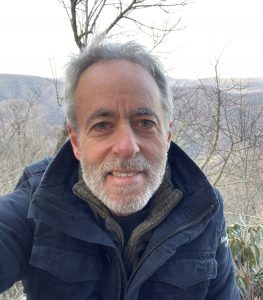
Current Position: Associate Professor of Biology, College of Charleston, SC
Education: A.B. Biology, Princeton University, 1985; M.S. University of Florida, 1989; Ph.D. University of Washington, 1995; postdoc, Hopkins Marine Station, 1996-7
Professional Experience: Assistant/Associate Professor, Biology, College of Charleston, 2005-; Director, Grice Marine Laboratory, 2012-2021; Assistant Professor, Biology and Marine Sciences, UNC-Chapel Hill, 1998-2004
SICB Activities: M. Patricia Morse Award for Excellence in Innovation and Science Education (2023); DIZ best student talk session judge (2023); Libbie Hyman award committee (2021, 2022); authored DIZ proposal for Student Award & Mentoring Program (originating Rice and Kohn Awards, adopted 2018); founded Invertebrate Zoology section of SICB Digital Resources; Chair, Educational Council 2009-2015 (originating Morse Award and TALX Workshops); Membership Diversity committee (2004); symposium organizer (2010: “Evolutionary Paths among Developmental Possibilities,” 2006: “Marine Life Cycles”); Adrian M. Wenner strong inference award (1995); DIZ best talk award (1992)
Research Interests: Marine invertebrate form/function, larval ecology, life-history evolution, fertilization ecology, environmental biology
Statement of Goals: Because DIZ spans such a broad range of taxonomic and conceptual interests, it is important to find ways to foster member inclusion, engagement, and interaction. I have goals in several areas. Membership: Division records show that DIZ has been 3rd slowest to recover from pandemic losses (still down 35%). Additionally, students account for only 34% of DIZ membership, compared to 52% for SICB as a whole. I want to strategize new ways to reach out to potential members, especially students, to grow our numbers and increase diversity to support DIZ’s long-term health. Hyman fund: With increased resources, we will have new opportunities to support students and DEI. However, our committee received only 5 applications this year, showing that our outreach must more effectively publicize all that DIZ offers to students. Communication: With my background in developing sci-comm products with REU students, I want to explore ways to increase the presentation of our work to the public. One idea is to sponsor a regular 3MT-style video contest, creating a ready source of material to showcase the importance of our science and the contributions and creativity of our students. Mentoring: In 2018 DIZ approved the awards and mentoring program that I proposed, but we did not implement the mentoring portion nor the writing of lay abstracts. DIZ leadership has restarted these plans and I want to continue to guide their implementation so that these opportunities for cross-generation interaction and communication achieve their full potential. With six years of experience on the SICB executive committee, I am eager to take on the responsibilities of DIZ chair in representing our division, keeping members informed, and helping to shape SICB policy and practice.
Alyssa Y. Stark
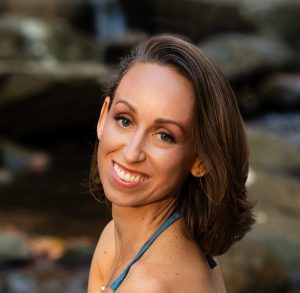
Current Position: Assistant Professor, Villanova University
Education: B.S. in Animal Biology, specializing in Animal Behavior, UC Davis (2006); Ph.D. in Integrated Bioscience, University of Akron (2014); Postdoctoral Scholar in Department of Biology, University of Louisville (2014-2017)
Professional Experience: Assistant Professor, Villanova University (2017-current); Project Manager, Biomimicry Research and Innovation Center, Akron OH (2013-2014); Biomimicry Consultant (2014-current)
SICB Activities: SICB member since 2012; 2019 symposium co-organizer; session moderator (several); invited panel member of “Parenting in Academia” (2020); invited symposium speaker (2020); 2020 Carl Gans Award Winner
Research Interests: I use an integrative approach to explore how environmental factors affect the performance, behavior, and morphology of biological organisms. Specifically, I integrate laboratory and field-based methods rooted in biology, with analytical and theoretical methods from physics, chemistry, and material science. Most of my work is focused on using geckos, ants, and sea urchins to explore questions about the functional morphology of adhesion. Additional areas of interest include biomechanics of locomotion and the functional properties of biological materials. With the help of collaborators, we also help to develop and refine bio-inspired designs, and biomimetic practices and education.
Statement of Goals: SICB was the first professional meeting I attended. In 2012, as a PhD student, I brought one undergraduate student and a poster with me and that was it! We did not know anyone at the conference, nor really how to be at one. By the end the conference, I had met true leaders in my field, had conversations that changed my research trajectory, and begun to build a huge network of friends and colleagues that I have maintained and expanded upon every year since. I believe this is the true gift and magic of SICB, and I intend to not only preserve this in my role but enhance it. We, as a Society, face dynamic social and economic challenges inside and outside of academia. In my role, I plan to intentionally explore these challenges and work to adapt and even take advantage of them. While I consider SICB to be one of my two “home” societies, I have spent more time in service roles outside of SICB at the Adhesion Society (i.e., Division founder and Chair of the Bioadhesion Division; Member-at-Large; Session Chair (several); Symposium Organizer; Young Scientist Award Winner). Now, I am excited for the opportunity to apply my skills in service of SICB. As someone who works with both invertebrates and vertebrates, is rooted in integrative science, and straddles life in academia with consulting work and professional connections in industry, I bring a unique and valuable perspective to DIZ and SICB as a whole.
